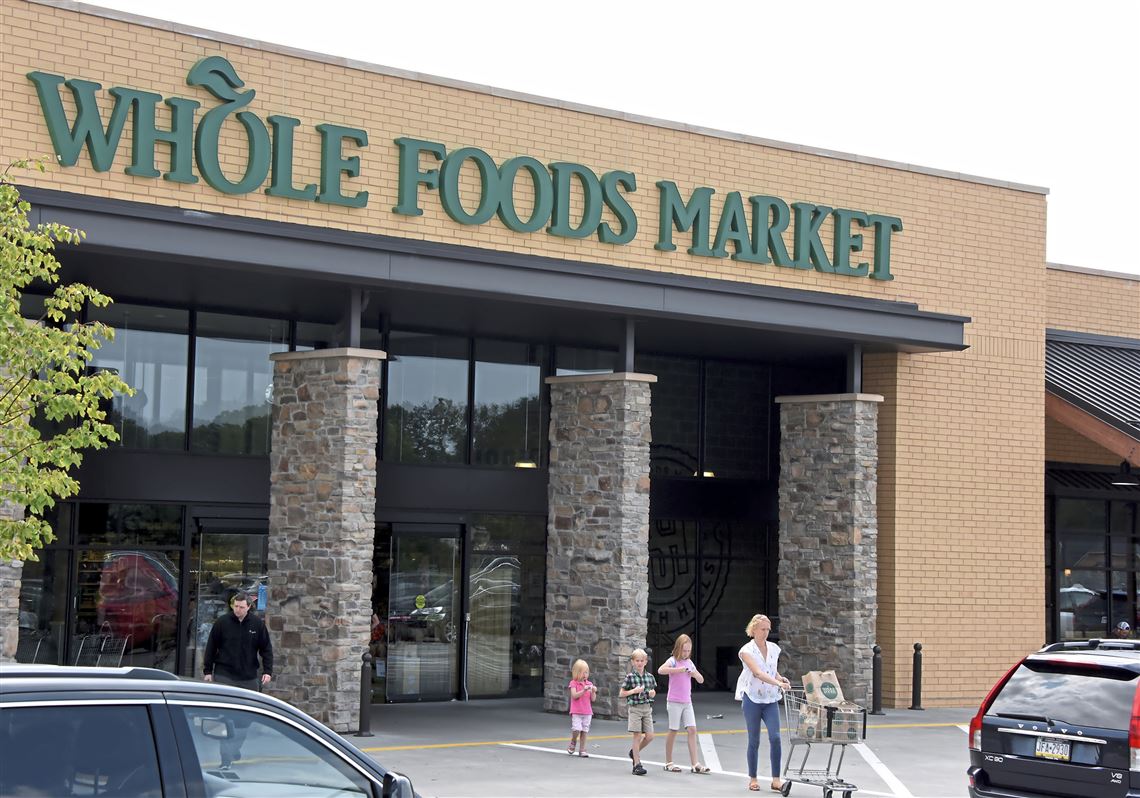Since online retail giant Amazon bought the Whole Foods grocery chain a year ago this week, the grocer has become more efficient by slashing prices and offering deep discounts to Prime members.
At the grocer’s East Liberty store — Whole Foods’ original site in the Pittsburgh market — the result seems to be that more people are shopping there. But employees report that there also have been trade-offs.
Six current and former employees of the East Liberty Whole Foods -— the grocer also has locations in McCandless and Upper St. Clair -— say that under new ownership the company is less employee-friendly. One example: Buyers who order products for the store with three negative marks on their records can be fired if shelves aren’t stocked properly.
As a result, some employees “are under a tremendous amount of stress right now,” said John-Paul Runyan, a former East Liberty employee who worked at the grocery store for seven years before resigning recently. He held different positions during his tenure, including working as a cashier and a customer service supervisor.
Since the company sale, he said, the East Liberty Whole Foods has cut back on workers, eliminating nearly half of the approximately 25 supervisors storewide. Across the country, every Whole Foods store eliminated its marketing staff in July, the Wall Street Journal reported.
Customer experience is changing, too. Though Whole Foods has dropped the price of many products, it has done away with a selection of organic foods like free-range chicken and heritage meats, seasonal produce and some specialty goods.
Yet the company has said it remains committed to food without artificial ingredients that are non-GMO project-verified.
A game-changer
Whole Foods debuted in Austin, Texas, as a natural foods market in 1978, and by 1999, it had opened its 100th location. A grocery chain with a hippie-meets-yuppie vibe, Whole Foods had a history of building community among shoppers as well as employees.
As the company grew, it also earned a “whole paycheck” reputation with prices higher than those at a typical grocery store. Some cast the company as a gentrifier whose corporate-owned stores led to higher rents in an area, affecting longtime mom-and-pop shops and residents.
Yet Whole Foods began struggling in recent years, as other grocers added organics and customers began shopping differently. In August of last year, Seattle-based Amazon bought the company for almost $14 billion in an all-cash deal.
Since then, in addition to slashing prices and implementing Prime discounts, the grocer has rolled out delivery in certain markets as well as a new store model, Whole Foods 365, that offers less expensive goods than the flagship.
On the first day of the takeover, Amazon released a list of products ranging from bananas to salmon that would be discounted between 7 and 43 percent.
Lower prices, combined with a new inventory system, led to empty shelves all over the country — a situation chronicled on Twitter and reported in news media.
Employees say the kinks have been ironed out, and far fewer shelves are empty, but a scorecard-type system has ratcheted up stress for buyers and team leaders (the equivalent of managers), who fear losing their jobs for not filling shelves properly during weekly inventory audits.
The stress has contributed to a feeling of workplace isolation.
“There’s no real community like there used to be,” said another longtime East Liberty employee who asked to remain anonymous.
In February, Business Insider reported that Whole Food employees were crying on the job, with reports from nearly 30 current and former employees across the nation describing the workplace culture as punishing. In addition, more than a dozen executives and senior managers have left since Amazon took over, the Wall Street Journal reported.
Minus 20 to 30 seasonal workers, employees estimate that around 200 people work at the East Liberty store.
“They are increasingly asked to do more work with less help,” Mr. Runyan, the former employee, said.
After 20 years on the Fortune 100 best companies to work for, Whole Foods fell off the list in 2018.
Organic changes, local vendors
Though organic and local products are prioritized in the company’s values statement, the six employees interviewed for this article said they have noticed a drop in both at the East Liberty store.
A company spokesperson refuted those observations.
“Just last year we introduced products from more than 700 local suppliers,” nationwide spokesperson Rachael Dean Wilson said.
Whole Foods is still shining light on suppliers, she said, noting that nearly 30 were honored in its yearly supplier awards in April. They included Lancaster Farm Fresh Co-Op based in Lancaster, Pa.
Several local vendors whose wares are sold at the East Liberty Whole Foods didn’t want to go on the record.
But Mike Smalis of The Greek Gourmet in Squirrel Hill said he is pleased with his relationship with the company, which stocks his Peppi’s Greek Gourmet hummus in East Liberty and two other locations. He said he has seen a 20 percent rise in sales over the past year.
Mr. Smalis also said he does not pay Whole Foods for stocking his product — in contrast to reports that some suppliers are having to pay higher fees for shelf space after a policy change introduced in February, the Wall St. Journal reported.
A Cleveland-based sauerkraut and pickle company whose products are sold at the East Liberty Whole Foods echoed Mr. Smalis’ sentiments.
The jury is still out as to whether Whole Foods’ strategies are working, especially since the Whole Foods earnings reports are buried in an Amazon “physical store” line item, Bloomberg reported. Yet in the past year, employees say more people have been shopping at the East Liberty store than pre-Amazon.
“It’s evident because people ask where things are more than they ever did,” an employee said. “If we were staffed to handle the business, I’d be a lot happier about that than I am.”
Melissa McCart: mmccart@post-gazette.com
First Published: August 27, 2018, 11:57 a.m.

















